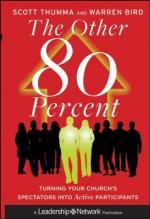It dates from Sir George Rooke’s expedition against
Cadiz in 1702. Before that time snuff-taking
in England was confined to a few luxurious foreigners
and English who had travelled abroad. They took
their snuff with pipes of the size of quills out of
small spring boxes. The pipes let out a very
small quantity upon the back of the hand, and this
was snuffed up the nostrils with the intention of
producing a sneeze which, says Lillie, I need not
say forms now no part of the design or rather fashion
of snuff-taking; least of all in the ladies who took
part in this method of snuffing defiance at the public
enemy. When the fleet, after the failure of its
enterprize against Cadiz, proceeded to cut off the
French ships in Vigobay, on the way it plundered Port
St. Mary and adjacent places, where, among other merchandize,
seizure was made of several thousand barrels and casks,
each containing four tin canisters of snuffs of the
best growth and finest Spanish manufacture. At
Vigo, among the merchandize taken from the shipping
there destroyed, were prodigious quantities of gross
snuff, from the Havannah, in bales, bags, and scrows
(untanned buffalo hides, used with the hairy-side
inwards, for making packages), which were designed
for manufacture in different parts of Spain.
Altogether fifty tons of snuff were brought home as
part of the prize of the officers and sailors of the
fleet. Of the coarse snuff, called Vigo snuff,
the sailors, among whom it was shared, sold waggon-loads
at Portsmouth, Plymouth, and Chatham, for not more
than three-pence or four-pence a pound. The greater
part of it was bought up by Spanish Jews, to their
own very considerable profit. The fine snuffs
taken at Port St. Mary, and divided among the officers,
were sold by some of them at once for a small price,
while others held their stocks and, as the snuff so
taken became popular and gave a patriotic impulse
to the introduction of a fashion which had hitherto
been almost confined to foreigners, they got very
high prices for it. This accounts for the fact
that the ladies too had added the use of the perfumed
snuff-box to their other fashionable accomplishments.]
* * * *
*
No. 345. Saturday, April 5, 1712.
Addison.
Sanctius his animal, mentisque capacius
altae
Deerat adhuc, et quod dominari in coetera
posset,
Natus homo est.
Ov. Met.
The Accounts which Raphael gives of the Battel of
Angels, and the Creation of the World, have in them
those Qualifications which the Criticks judge requisite
to an Episode. They are nearly related to the
principal Action, and have a just Connexion with the
Fable.
The eighth Book opens with a beautiful Description
of the Impression which this Discourse of the Archangel
made on our first Parent[s]. Adam afterwards,
by a very natural Curiosity, enquires concerning the
Motions of those Celestial Bodies which make the most
glorious Appearance among the six days Works.
The Poet here, with a great deal of Art, represents
Eve as withdrawing from this part of their Conversation,
to Amusements more suitable to her Sex. He well
knew, that the Episode in this Book, which is filled
with Adams Account of his Passion and Esteem for Eve,
would have been improper for her hearing, and has therefore
devised very just and beautiful Reasons for her Retiring.




